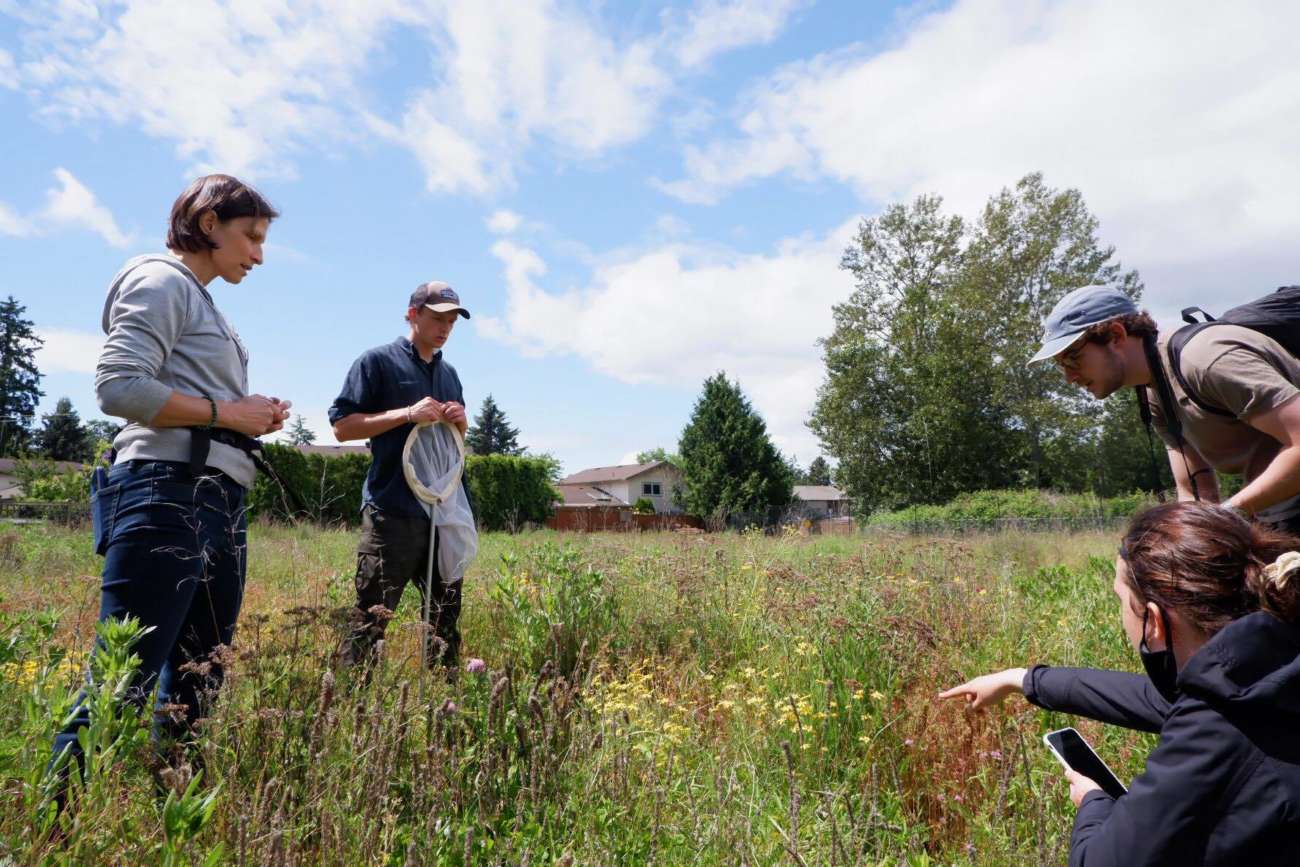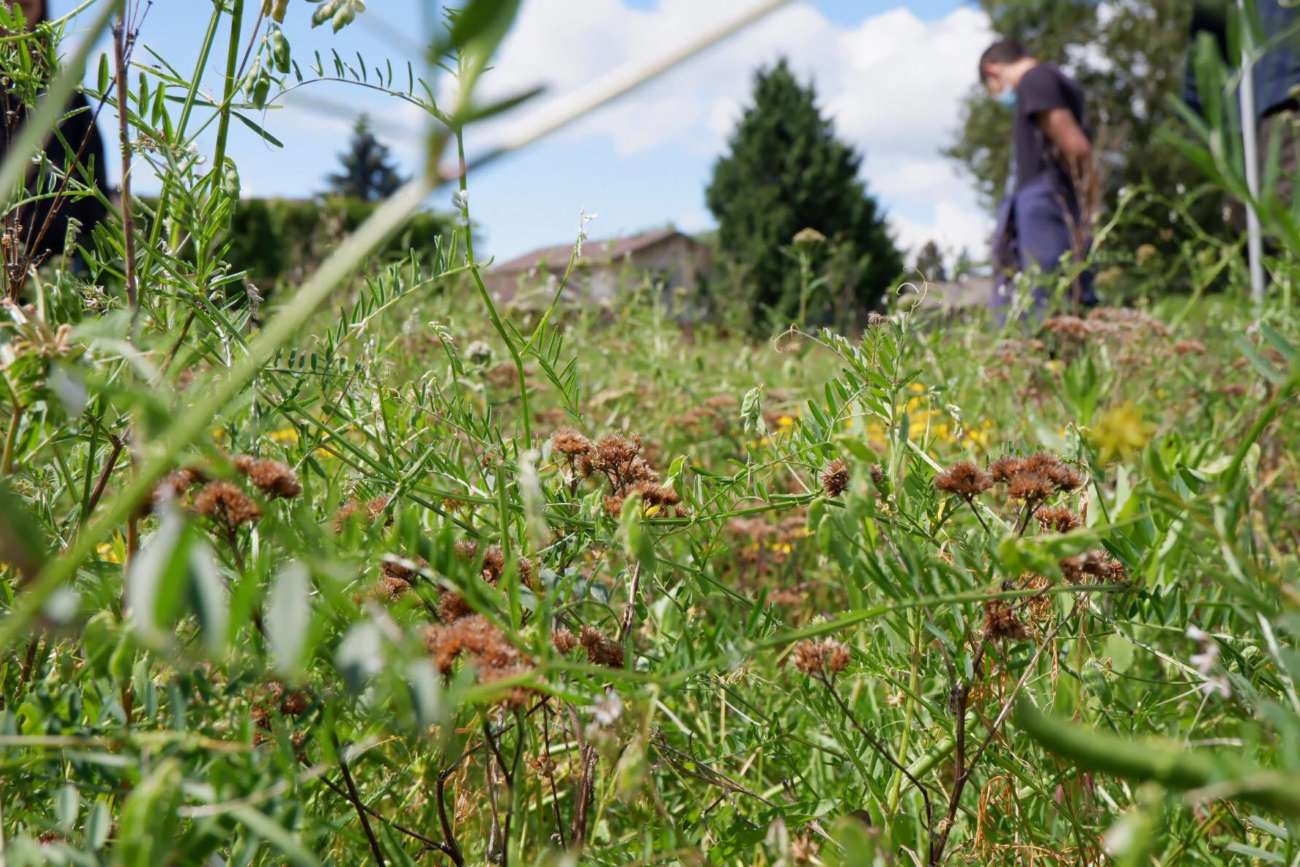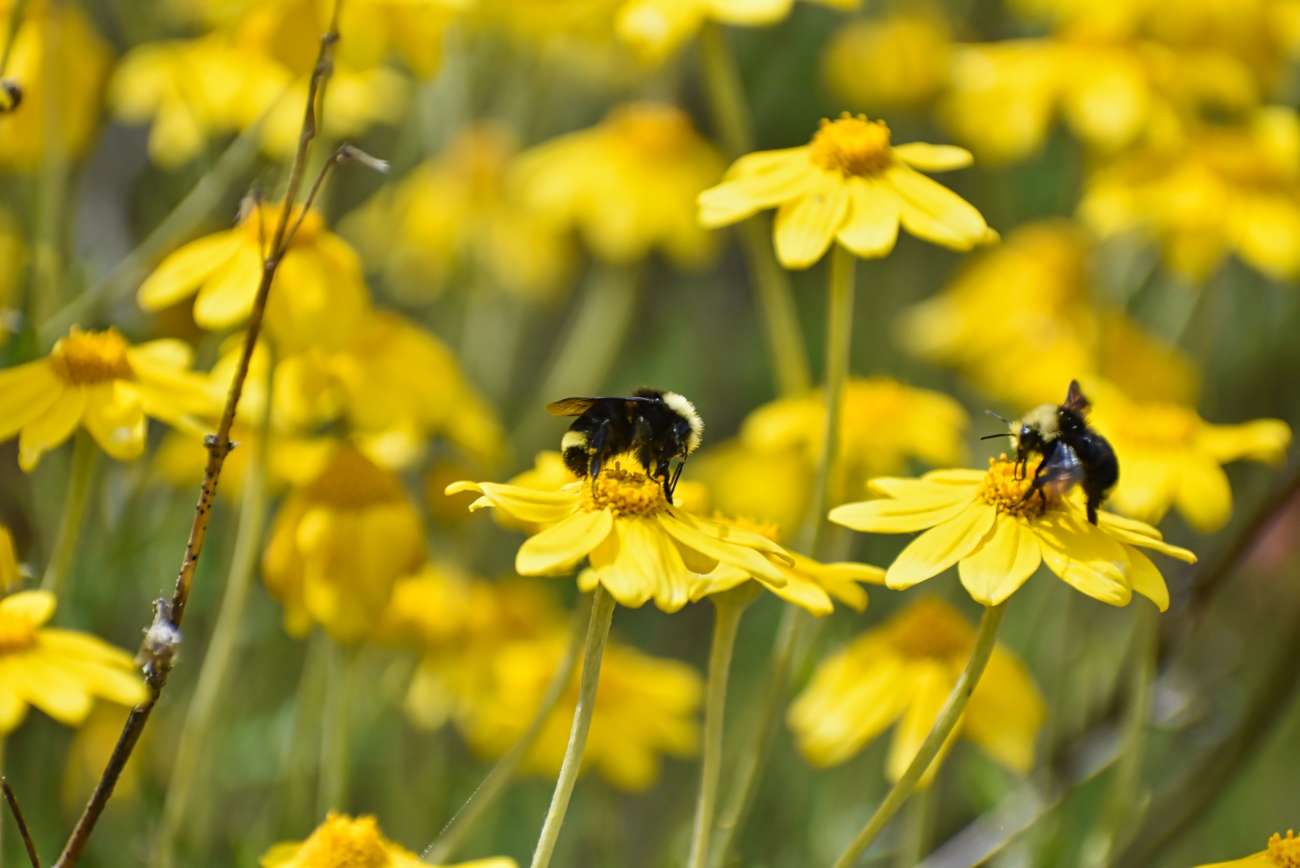Youth take the lead in Victoria's Pollinator Leadership Team
By Thompson Hyggen, Pollinator Leadership Team and Pollinator Partnership Canada Summer Intern

Youth often have unique perspectives on current issues but sometimes don’t have an opportunity to act on these. Myself, along with 16 other young people from Victoria, British Columbia, Canada, were given a chance to learn about pollinators, and then organize and carry out a pollinator monitoring and outreach project. Designated the “Pollinator Leadership Team”, we are youth with diverse backgrounds in education and skillsets; some members are in high school and active in environmental clubs and others are engaged in or have completed post-secondary education. Regardless of experience, we are united by our drive to be involved in pollinator conservation, something that makes all the difference.

After listening to talks from experts in pollinator conservation, entomology, botany and city planners, and participating in a full day brainstorming workshop, we were let loose with an end goal of supporting the pollinators of our city, through science and outreach. Since many areas of Victoria are filled with non-native ornamental and invasive plants, we decided to see for ourselves how native plants compare in terms of value for native and non-native bees. Native plants have been observed to provide better resources and habitat for native pollinators including bees, birds, butterflies and many other critters. This provides the framework to support local food webs and is essential for maintaining a functional native ecosystem. With the help of the Insight Citizen Science App (available on iOS), we have been monitoring the ever-changing flora and fauna of Victoria as spring changed to summer, in hopes for some insights. While the data we are gathering has not been interpreted yet, there is a consensus among group members that our native flowers support more species of native pollinators.

To help with community involvement and education, the Pollinator Leadership Team has formed connections with local organizations and homeowners to create more pollinator habitat. With increasing native plant coverage in the city as one of our main goals, we provided and planted some pollinator-friendly native plants with a local community garden. The planting process was a great opportunity to connect with other community members, who stopped by to check out what was going, and some even stayed to help. We have also been contacted by multiple other local businesses and gardens to assist with pollinator monitoring, education and planting. In the upcoming months, we will continue building these relationships to increase community knowledge and appreciation of local pollinators while creating more native habitat.

This opportunity has helped my peers and I connect with local conservation efforts, increase our understanding of local plants and pollinators, and provided us with the tools to make a difference. Experiences like these are important for promoting engagement and ownership in conservation for younger generations. We believe that as youth, we have the potential to make more of an impact as our actions can speak louder about important issues. The efforts we are making will contribute significantly to the wellbeing of these important animals and help shape all our futures for the better. To follow what we are up to and for general information on local plants and pollinators in Victoria, follow us on Instagram.
The project was created and led by Pollinator Partnership Canada, in partnership with the Royal BC Museum and with funding from the City of Victoria and the Victoria Natural History Society.